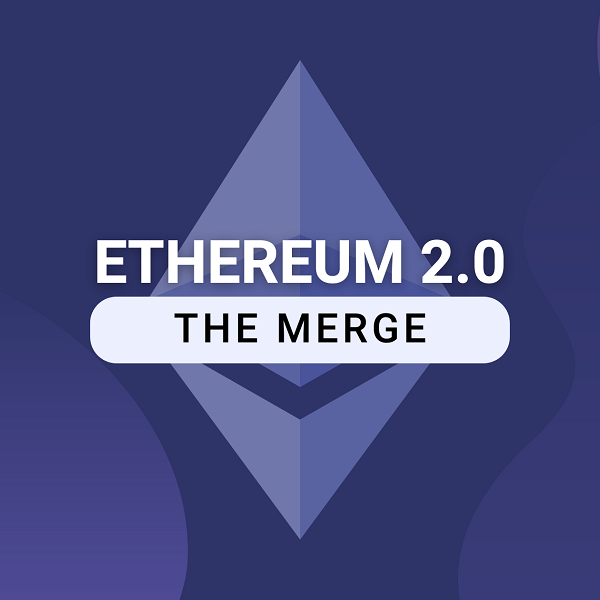
The Merge: What next after crypto’s landmark moment?
By Lachlan Feeney, Founder and CEO of Labrys
This week, a long-awaited and incredibly significant milestone occurred in the cryptocurrency industry. The merge, the process through which Ethereum – the second biggest blockchain network – transitioned from Proof-of-Work to Proof-of-Stake. The merge will have significant positive ramifications for both the perception of blockchains and investment in web3.
One of the most critical aspects of the merge is that Ethereum will reduce its energy consumption by ~99.95%, overcoming one of the fiercest criticisms of the industry: its carbon footprint. Ethereum offers excellent solutions for many web3 applications, but many companies have been reluctant to embrace it because of sentiment about its energy consumption. The changes will make the Ethereum blockchain more attractive to businesses, and will stimulate new innovation and investment in the sector.
But what is the merge? Just how significant is it? And what does it mean for both web3 and the blockchain ecosystem?
What is The Merge?
The merge occurred when Ethereum’s existing execution layer ‘merged’ with the new Proof-of-Stake consensus layer, the Beacon Chain, on September 15. The merging of the two removes the need for energy-intensive ‘mining’ and transfers the responsibility of block production to the validators operating on the Beacon Chain. The Beacon Chain has been operational since December 2020 running in parallel with the existing Ethereum Proof-of-Work chain. Over the nearly two years since its inception the Beacon Chain had been tested and upgraded until it was finally ready to take control of block production.
Ultimately, the merge allows the Ethereum blockchain to achieve the same level of security, scalability and decentralisation whilst consuming 99.95% less energy.
Financially, the benefits are significant, too. Pre-Merge, the Ethereum blockchain had to pay significant amounts of money to the miners for the task of securing the blockchain. Every day, it cost about 13,000 Ethereum – equivalent to AUD $30 million – to pay miners to secure the network. We need to pay the miners so much because mining is very expensive and miners will only mine if the job is profitable. The Ether used to pay the miners is created out of thin-air putting inflationary pressure on the cryptocurrency.
However, because Proof-of-Stake uses significantly less energy than Proof-of-Work, we don’t need to pay the validators much for them to be able to operate profitably. Post-merge, new Ether issued to pay for securing the network will drop by 90%.
Additionally, because of EIP-1559 (burning of gas fees), if the network is active enough and enough transactions are processed, Ethereum will move from an inflationary to a deflationary asset. The reduced energy consumption combined with the reduced issuance cost is significant for anyone holding – or interested in – Ethereum, and the industry at large.
How significant is the merge?
Seven years since the launch of Ethereum, it’s difficult to overstate just how significant the merge is. It’s certainly the biggest Ethereum upgrade by far, is widely considered the biggest upgrade ever of any blockchain and many people would argue that it is right up there with the creation of Bitcoin and blockchain itself.
It’s significant because of the criticisms it helps to alleviate, and the precedent it can set. It’s the first major domino in a series of upgrades that will continue to improve Ethereum’s scalability, security, and decentralisation. For example, within the next 6 to 12 months post-merge, the first sharding upgrade (proto danksharding) will ship which is expected to reduce transaction fees on the blockchain by up to 10x. Every upgrade helps to convince formerly-reluctant businesses to embrace Ethereum.
At Labrys, Australia’s largest on-shore blockchain development agency, we help clients scope, design and implement blockchain and web3 solutions. Often clients will shy away from building on Ethereum for fear of being associated with its massive carbon footprint. On Proof-of-Work, it was hard to argue against their reservations. On Proof-of-Stake, it’s no longer an issue.
Now that the energy argument is over and a long-term vision has been set, we can work with clients to build projects on the blockchain solution that is best-suited for the project in question, free of concern over the environmental impact. Long-term, we expect the merge to catalyse a significant increase in both the number and size of projects built on Ethereum. The impact this will have on the web3 industry is incredibly exciting, both for Labrys and everyone involved. After a humbling period for the cryptocurrency industry, the merge is a significant positive landmark and signals the dawn of a more scalable, secure and decentralised future.


